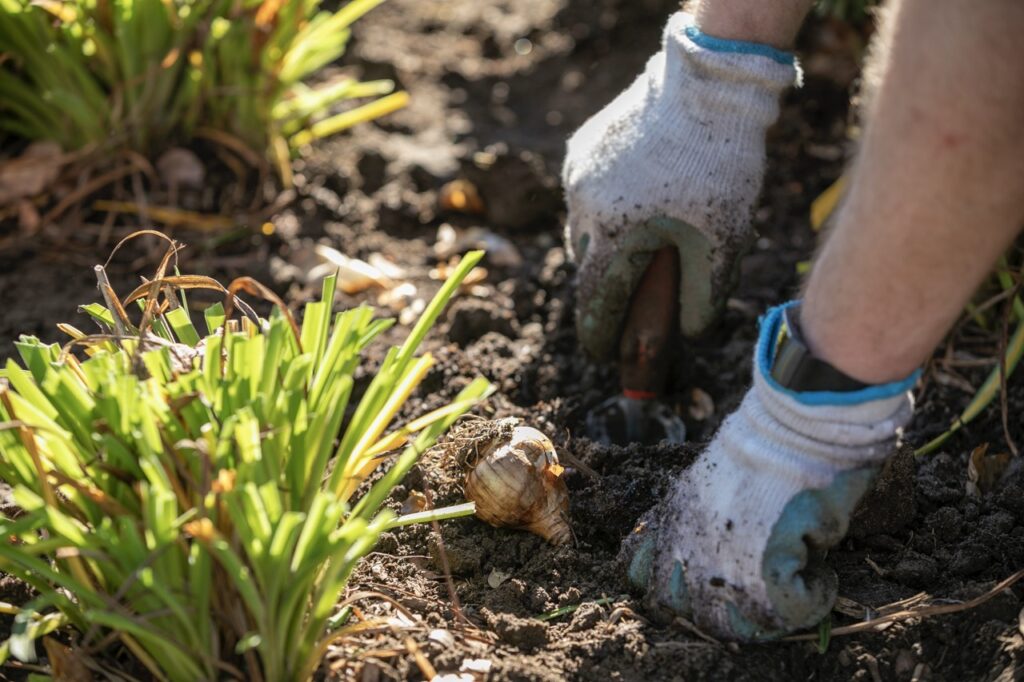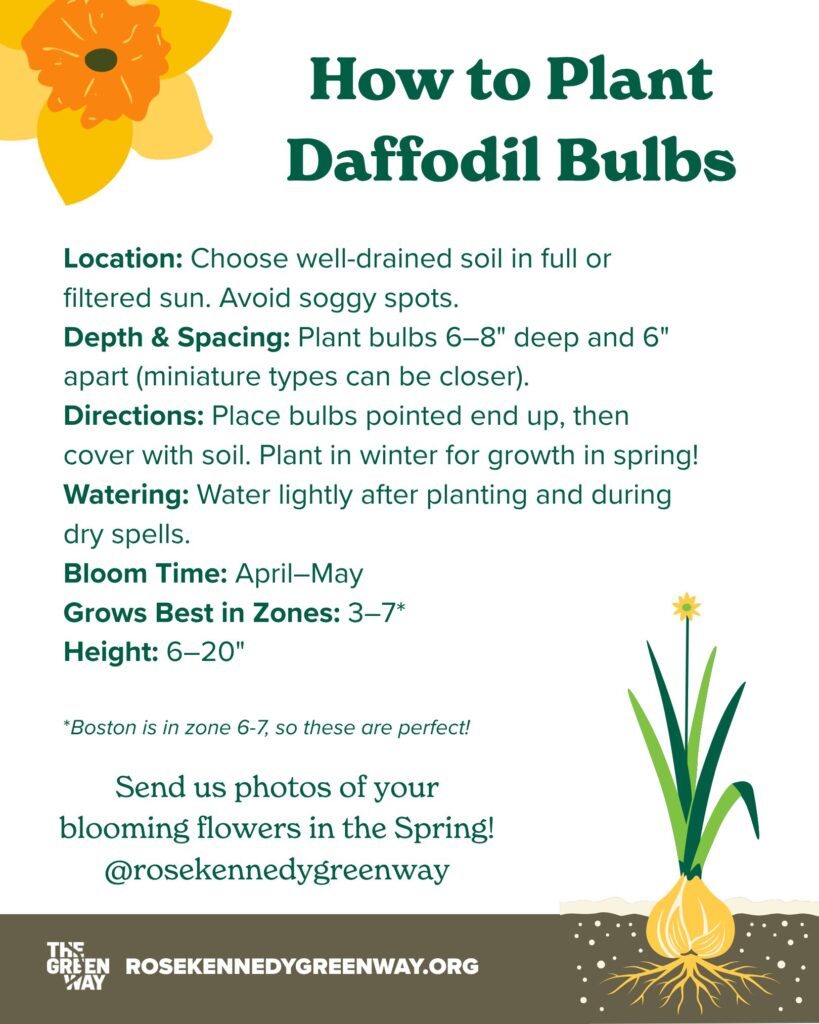Even as The Greenway starts to wind down for winter, our work doesn’t stop. One of the most exciting parts of this season is planting bulbs. You might not see them now, but come spring, these little underground powerhouses will pop up as bright, cheerful blooms that bring color and life back to the park.
Planting bulbs in the fall isn’t just tradition—it’s how these plants thrive. Many bulbs, like tulips, daffodils, and crocuses, need a period of cold dormancy to develop strong roots and healthy flowers. By planting now, we’re setting them up for a successful spring—and creating a garden that’s good for more than just human eyes.

Bulbs Are Good for Your Garden—and for Wildlife
Bulbs aren’t just beautiful—they’re also an important part of the ecosystem. Early-blooming bulbs provide some of the first nectar and pollen for bees, butterflies, and other pollinators in the spring. As the foliage dies back, it creates shelter for insects and other small wildlife. Planting a mix of bulbs can support a diversity of species while also extending your garden’s bloom season. They’re a simple way to make your garden more resilient, colorful, and wildlife-friendly.
“Bulbs are some of my favorite plants because they are the first sign of spring,” says Cameron Frecker, Horticulturist at the Greenway Conservancy. “Daffodils are a classic—they’re reliable, cheerful, and easy to grow. I also love introducing people to bulbs you might not expect, such as Erythronium californicum ‘Pagoda’. Their nodding bright yellow flowers contrast beautifully with their robust green foliage!”

How to Plant Bulbs in Your Garden
Planting bulbs is easier than you might think. Here’s a practical guide to help your bulbs thrive:
- Pick healthy bulbs – Choose firm bulbs without mold or soft spots. Bigger bulbs usually produce bigger blooms, but even small bulbs can create drifts of color.
- Choose a sunny or part-shade spot with well-drained soil – Bulbs don’t like soggy conditions. Think about layering bulbs under shrubs or trees to brighten shady areas and add early-season blooms for pollinators.
- Plant at the proper depth – As a general rule, plant bulbs two to three times as deep as their height, pointy side up. Deeper planting protects them from frost and pests.
- Water and mulch – Give your bulbs a good drink after planting. A layer of mulch helps insulate them over winter, keeps the soil temperature steady, and reduces frost heaving.
- Mark your spots – Some bulbs disappear under leaves or mulch during winter. Marking their location helps avoid accidentally disturbing them while tending your garden.

Bring Blooms Inside: How to Force Bulbs Indoors
You don’t have to wait for spring to enjoy bulbs. Forcing bulbs indoors gives you early blooms and a pop of color during the winter months:
- Chill first – Store bulbs in a cool, dark spot (like a fridge) for 10–12 weeks to mimic winter conditions.
- Pot and water – Plant in well-draining soil and water lightly.
- Bring into the light – After chilling, place them in a sunny window. You’ll enjoy early blooms and can even introduce pollinator-friendly flowers to your indoor spaces.
Planting bulbs is a simple way to connect with the seasons, support pollinators, and make your garden more biodiverse. On The Greenway, our fall plantings ensure that spring arrives with color, life, and purpose. At home, bulbs can brighten your garden, extend your blooming season, and help early-season pollinators thrive.
Share your favorite bulb with us on social media, or tag us in your blooming bulb photos throughout the season—we can’t wait to see what you share!



